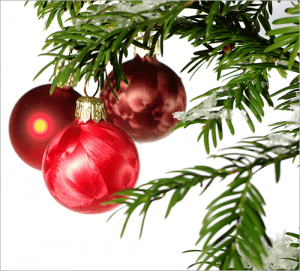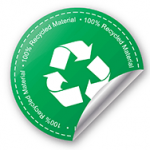

 If you’re trying to maintain an eco-friendly home, you may have some concerns about your Christmas tree. Many people don’t choose a live Christmas tree because of concerns regarding farming practices and the use of pesticides. But is opting for an artificial tree truly a better choice?
If you’re trying to maintain an eco-friendly home, you may have some concerns about your Christmas tree. Many people don’t choose a live Christmas tree because of concerns regarding farming practices and the use of pesticides. But is opting for an artificial tree truly a better choice?
Approximately 33 million real Christmas trees are sold in North America each year, according to the U.S. EPA. Luckily, about 93 percent of those trees are recycled through more than 4,000 available recycling programs.
Also known as “treecycling,” the act of recycling a Christmas tree is a leading reason many experts agree they are more environmentally friendly than their plastic counterparts.
 Treecycling is an easy way to return a renewable and natural source back to the environment instead of disposing it in a landfill, where decomposition rates are slowed due to lack of oxygen.
Treecycling is an easy way to return a renewable and natural source back to the environment instead of disposing it in a landfill, where decomposition rates are slowed due to lack of oxygen.
Christmas trees are recycled into mulch and used in landscaping and gardening or chipped and used for playground material, hiking trails, paths and walkways. They can be used for beachfront erosion prevention, lake and river shoreline stabilization, and fish and wildlife habitat.
In order to ensure a healthy supply of Christmas trees each year, growers must use sustainable farming techniques. For each tree harvested, one to three seedlings are planted the following spring, ensuring a healthy supply of trees.
According to the National Christmas Tree Association, the Christmas tree industry employs more than 100,000 Americans, an important economic consideration in the real versus artificial debate.
Besides the aforementioned cons associated with real Christmas trees, they are farmed as agricultural products, meaning repeated applications of pesticides, herbicides and fertilizers may be used throughout their lifetime. The ideal tree would be raised organically, using integrated pest management techniques rather than chemicals.
Another con associated with real Christmas trees may depend on where you live. For climates where coniferous trees don’t grow, that tree in your living room may have had to travel hundreds of miles to reach the lot, significantly affecting the environmental impact associated with travel. However, a tree trucked from a couple states away is still traveling thousands of miles less than one from overseas.
The Verdict?
So, what’s the final word? Drumroll please… Real trees top our charts for holiday adornment. Even though they might shed needles on your floor, the carbon-neutral nature of their production and their ease of recycling make them a clear winner.
http://www.earth911.com/home-garden/planting-an-idea-choosing-a-real-vs-artificial-christmas-tree/
http://www.earth911.com/home-garden/how-christmas-tree-recycling-works/
http://www.earth911.com/home-garden/4-ways-to-have-the-greenest-christmas-tree/
Yippee!! Glad you agree with me. Love my real tree and yes, we’ve been recycling them for years along with our real wreaths. Thanks so much!!
My boys made me years ago switch to an artificial tree. They did not like killing a tree, or the thought of trees being grown for just Christmas. I miss the fresh pine smell but enjoy having a tree that I an use year after year. I also like the safety factor.
Yay team real tree!!!!!